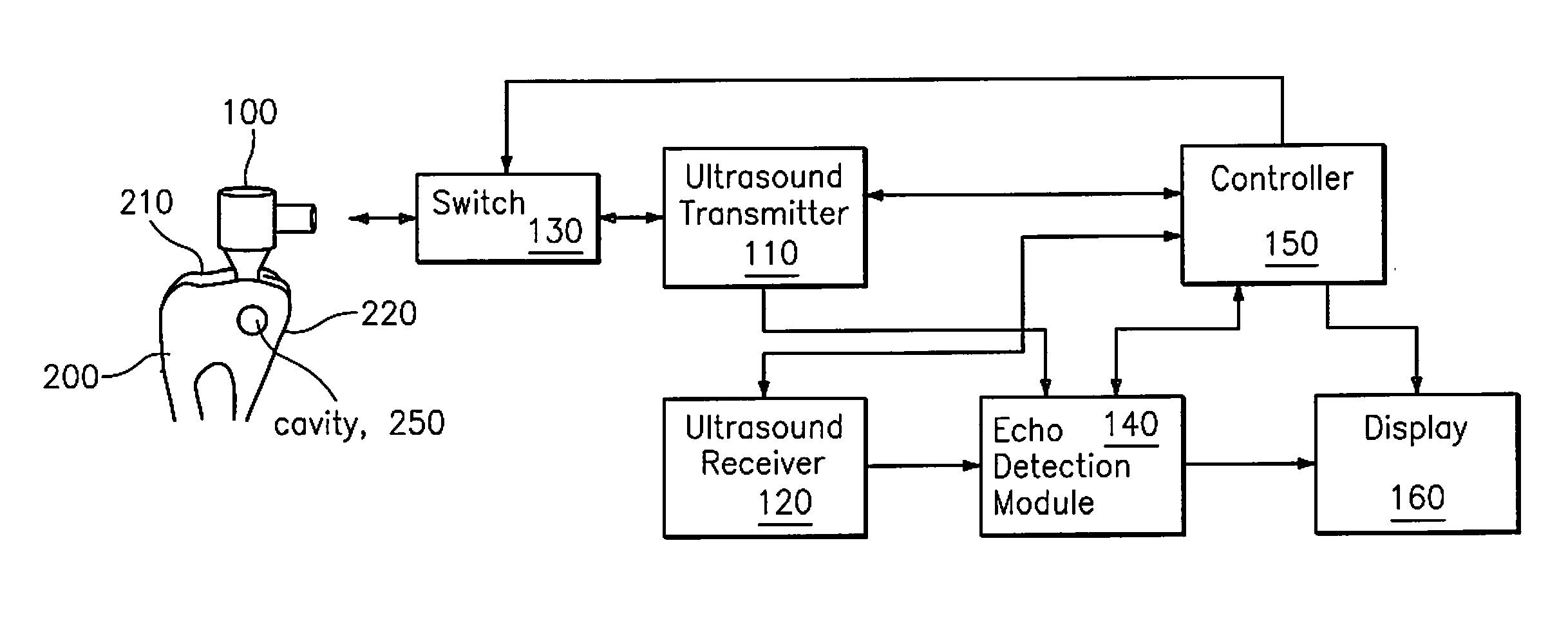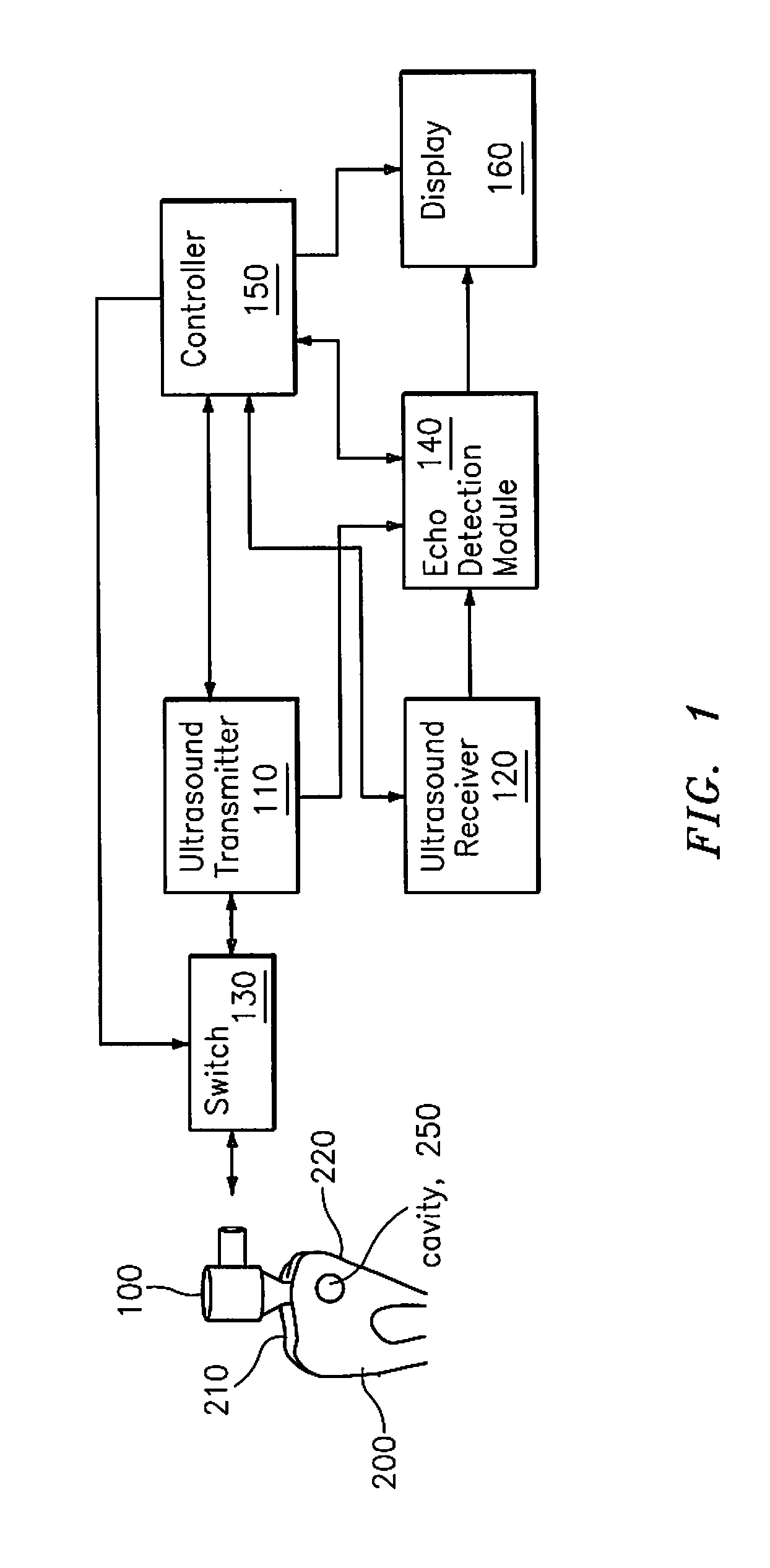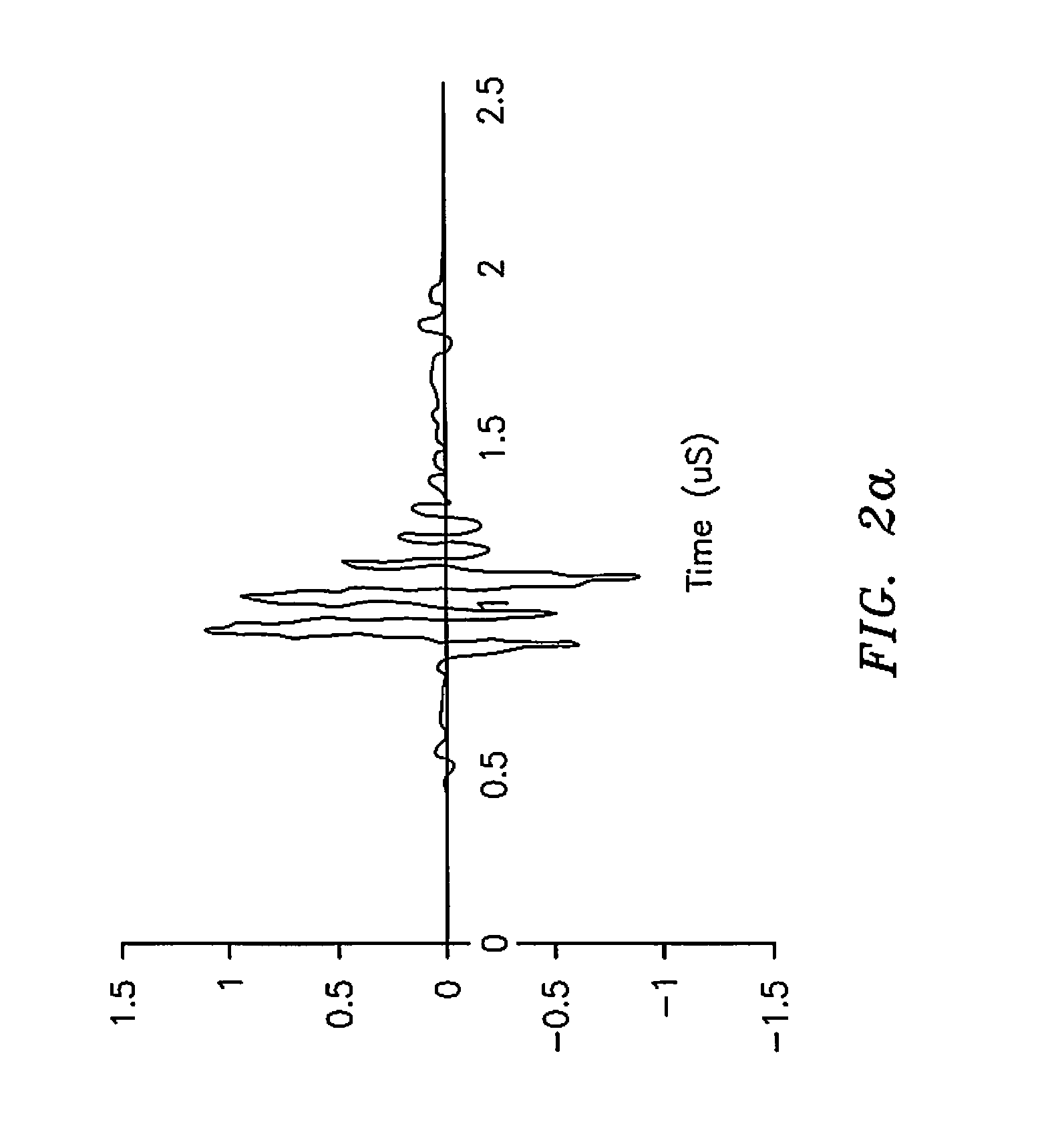Portable ultrasonic device and algorithms for diagnosis of dental caries
an ultrasonic device and caries technology, applied in diagnostics, medical science, applications, etc., can solve the problems of not being good for early detection and treatment, not being able to use dental radiographs to look for caries on the two accessible side surfaces of teeth, and large carious lesions that remain undetectabl
- Summary
- Abstract
- Description
- Claims
- Application Information
AI Technical Summary
Benefits of technology
Problems solved by technology
Method used
Image
Examples
Embodiment Construction
[0017]Hereinafter, preferred embodiments of the present invention will be described with reference to the accompanying drawings. It should be noted that the similar components may be designated by similar reference numerals although they are illustrated in different drawings. Also, in the following description, a detailed description of known functions and configurations incorporated herein will be omitted when it may obscure the subject matter of the present invention.
[0018]A novel approach to detect dental caries is provided using one or more of the algorithms described below along with a modulated or an un-modulated ultrasonic wave transmitted through a tooth that is under examination. When an ultrasound wave enters the tooth, wave reflections occur at density change interfaces, such as the enamel-dentin interface, as well as at the dentin-pulp interface. These reflections, i.e. displacements in relation to time, make it possible to measure the thickness of the enamel and dentin,...
PUM
 Login to View More
Login to View More Abstract
Description
Claims
Application Information
 Login to View More
Login to View More - R&D
- Intellectual Property
- Life Sciences
- Materials
- Tech Scout
- Unparalleled Data Quality
- Higher Quality Content
- 60% Fewer Hallucinations
Browse by: Latest US Patents, China's latest patents, Technical Efficacy Thesaurus, Application Domain, Technology Topic, Popular Technical Reports.
© 2025 PatSnap. All rights reserved.Legal|Privacy policy|Modern Slavery Act Transparency Statement|Sitemap|About US| Contact US: help@patsnap.com



